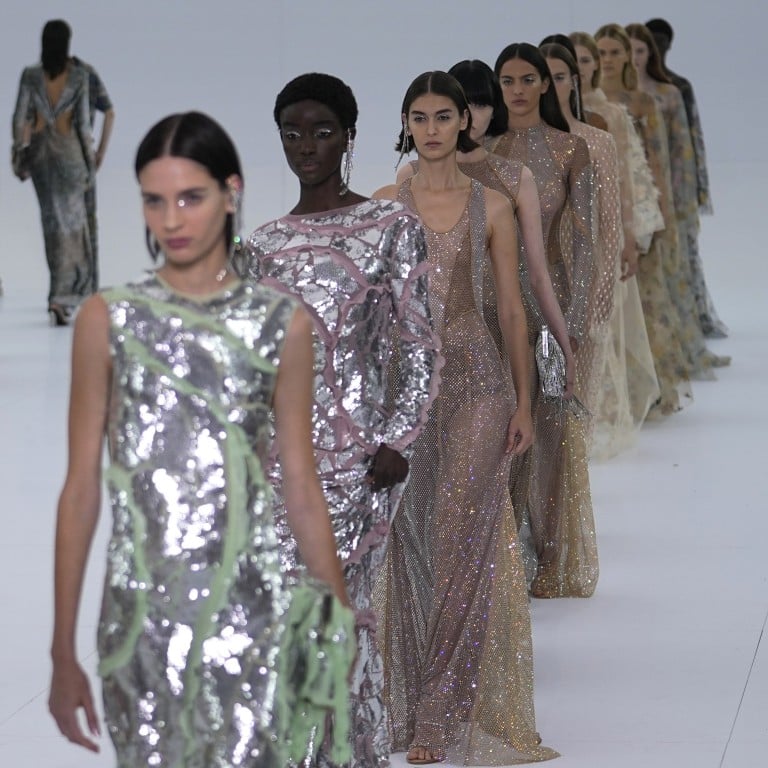Festive Season Fashion: Eastern Wear Pakistan Styles for Every Occasion
Wiki Article
Experience the Beauty of Conventional Eastern Clothing
Embark on a trip with the complex globe of traditional Eastern attire, where each garment informs a tale woven with social richness and historic value. Join us as we untangle the secrets behind these elegant items and uncover the attraction of Eastern outfit that has actually astounded generations. eastern wear pakistan.History of Eastern Attire
Eastern clothes has an abundant background that dates back centuries, showing the diverse cultures and customs of regions such as Asia and the Middle East. In Asia, standard attire varies significantly from the vivid saris worn in India to the sophisticated kimono of Japan.Throughout background, Eastern clothing has not just served as a kind of clothing however also as a symbol of cultural identity and heritage. Today, Eastern clothes proceeds to develop, blending standard components with modern-day fashion patterns to produce classic and one-of-a-kind designs.
Significance of Embroidery
Embroidery plays an important function in standard Eastern attire, adding complex details and social importance to garments that have been given via generations. In Eastern cultures, embroidery is not simply decorative yet holds deep symbolic definitions. Each stitch and pattern can share tales, beliefs, and even social standing.The art of needlework in standard Eastern clothes is a labor-intensive process that requires ability and persistence. Extremely proficient craftsmens carefully hand embroider intricate layouts onto textiles utilizing techniques that have been perfected over centuries. These stitched styles frequently mirror the abundant social heritage of the area they originate from, showcasing concepts influenced naturally, mythology, or historical events.

Glamorous Fabrics Used
Luxurious textiles play a crucial function in improving the elegance and opulence of typical clothes across varied Eastern societies. Silk, renowned for its softness and luster, is a preferred selection for lots of conventional garments due to its lavish feel and ability to curtain gracefully. In countries like India, China, and Japan, silk has a lengthy history of being utilized in conventional clothing, representing wealth and standing.Another commonly made use of elegant textile is brocade, characterized by detailed patterns woven into the product. Brocade includes a touch of sophistication to garments and is commonly seen in ceremonial outfits and official wear. Velvet, with its plush structure and abundant appearance, is also a preferred option for standard clothing in Eastern cultures, especially for unique celebrations and festive events.
Moreover, satin, chiffon, and organza are often made use of for their flowing and light-weight top qualities, adding a sense of delicacy and beauty to garments. These luxurious fabrics not only raise the visual charm of typical Eastern attire but also add to the total attraction and beauty of the user.
Workmanship Strategies
Typical clothes in numerous societies showcases remarkable workmanship techniques that are passed down via generations, highlighting the skill and virtuosity associated with creating these exquisite garments. Each embellishment, stitch, and needlework is meticulously crafted to produce timeless items that embody the cultural heritage and traditions of the area. The workmanship methods utilized in conventional Eastern clothes usually entail elaborate handwork, such as hand weaving, hand embroidery, and hand beading, which require accuracy and interest to information.Artisans that concentrate on these methods undergo years of training to excellent their abilities and master the conventional methods of garment construction. The usage you can find out more of top notch materials combined with specialist craftsmanship results in garments that not just look visually spectacular yet likewise stand the examination of time. The commitment to maintaining these craftsmanship methods guarantees that each item of typical Eastern clothing is a work of art, mirroring the abundant cultural history and heritage of the area.
Ageless Style and Appeal

The elaborate needlework, delicate beadwork, and elegant fabrics made use of in standard Eastern attire add to its exceptional beauty. The careful creation passed down with generations makes sure that every item informs a story and exhibits sophistication and grace.
In addition, the classic silhouettes and stylish draping of conventional Eastern clothes add to its long-lasting beauty. The streaming lines and classy designs produce a feeling of consistency and balance that is both aesthetically enticing and emotionally fascinating.
Basically, the timeless beauty and appeal of traditional Eastern outfit work as a testimony to the ability and creativity of the artisans that dedicate their lives to preserving these charming sartorial practices. - try this website eastern wear pakistan
Conclusion
To conclude, the style of conventional Eastern clothes is a testimony to the abundant background, social significance, and elaborate craftsmanship of the area. From the fancy embroidery to the extravagant textiles and classic elegance, each garment informs a tale and reflects the cultural identity of its origins. Embracing Eastern attire allows one to appreciate the artistry and style that have been given via generations, developing absolutely exquisite and captivating items.Embark on a trip with the complex world of conventional Eastern attire, where each garment tells a tale woven with social splendor and historic relevance.Embroidery plays an important role in traditional Eastern clothing, including intricate information and social importance to garments that have been passed down via generations.Luxurious textiles play an essential function in improving the beauty and luxury of my blog typical clothes across varied Eastern cultures. The craftsmanship techniques made use of in standard Eastern outfit frequently entail complex handwork, such as hand weaving, hand embroidery, and hand beading, which need precision and interest to detail.
In verdict, the sophistication of traditional Eastern clothing is a testament to the abundant history, social value, and complex craftsmanship of the area.
Report this wiki page